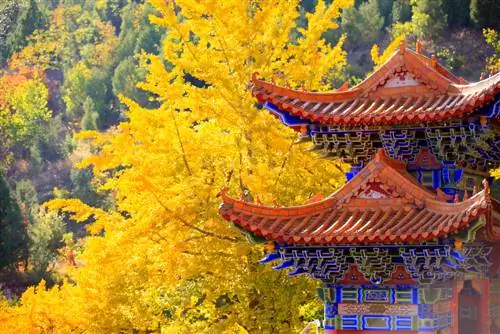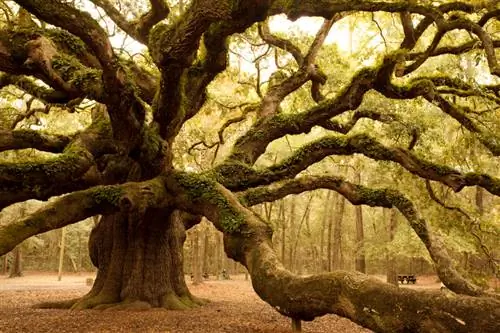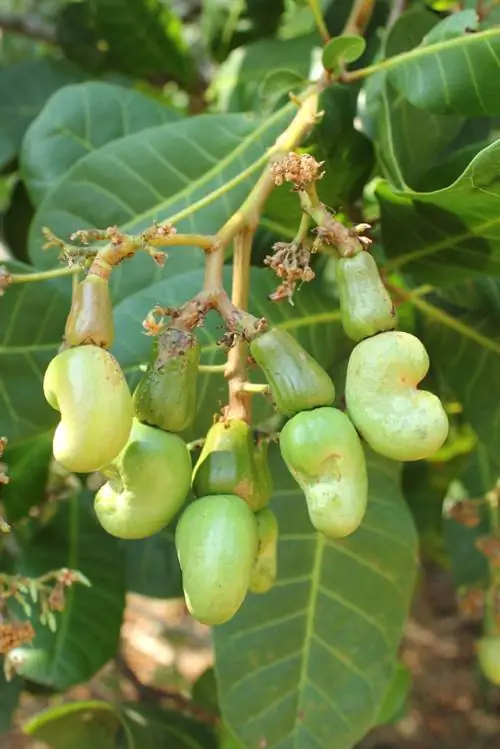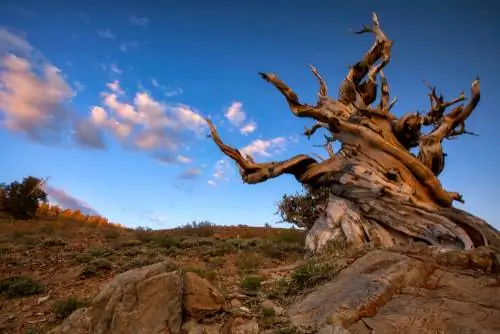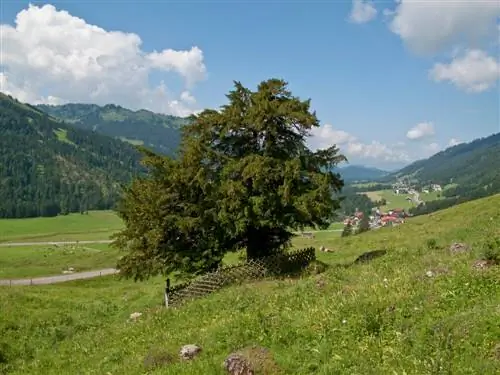- Author admin [email protected].
- Public 2023-12-16 16:46.
- Last modified 2025-01-23 11:22.
Ginkgo trees are originally native to China and Japan, but have been increasingly planted all over the world in recent years. The species is considered to be extremely robust and resilient. So it's no wonder that the ginkgo is one of the oldest plants in the world.

Where is the oldest ginkgo tree in the world?
The oldest ginkgo tree in the world is in the western Chinese province of Guizhou and is around 4,500 years old. This impressive specimen, known as “The Li Jiawan Grand Ginkgo King,” is a male ginkgo tree.
How old is the oldest ginkgo tree in the world?
The only known species of ginkgo, Ginkgo biloba, has been native to China for millions of years. The species has been considered sacred for several thousand years and is primarily planted within Buddhist temple complexes.
The world's oldest, still living ginkgos are also native to China. The probably oldest specimen is a male ginkgo, which is found in the western Chinese province of Guizhou and is around 4,500 years old. Other Chinese ginkgo trees have also reached an age of more than 1,000 years, but do not even come close to the impressive age of 'The Li Jiawan Grand Ginkgo King'
How old is the oldest ginkgo tree in Germany?
Japan and South Korea also have ginkgo trees that are over 1,000 years old. The first specimen in Europe was probably planted in Utrecht, Netherlands around 1730 and can still be admired in the old botanical garden there today. In Germany, too, many ginkgos were planted as ornamental trees in parks and avenues in the 18th and 19th centuries.
Johann Wolfgang von Goethe even dedicated the poem 'Ginkgo biloba' to the ancient tree. The famous poet even had a specimen planted in Jena at the end of the 18th century, which is now in the botanical garden. However, the oldest ginkgo in Germany is in Frankfurt-Rödelheim and was planted around 1750.
Why is the ginkgo also called a “living fossil”?
Ginkgos have been around for around 290 million years and were widespread around the world at the time of the dinosaurs between the Jurassic and Cretaceous periods. Of the original 17 genera with numerous species, only the only representative of the ginkgo plants (ginkgoate) is the species Ginkgo biloba. The other species died out millions of years ago, which is why today's ginkgo is also called a "living fossil" - it has survived for many millions of years and is now often planted as a so-called "climate tree" due to its robustness.
What is special about the ginkgo tree?
The ginkgo occupies a special position in the botanical order between coniferous and deciduous trees, as it cannot be assigned to either classification. Ginkgos are neither coniferous nor deciduous trees, but form a class of their own.
The ginkgo family developed very early in Earth's history at the same time as the first conifers and represents a kind of intermediate link or transition between the two tree orders. Like conifers, ginkgos are gymnosperms, but like deciduous deciduous trees, they shed their leaves in autumn characteristically shaped leaves.
Tip
Can you grow ginkgo in a pot?
There are now particularly small ginkgo varieties on the market that are perfect for pot cultivation due to their dwarfism. These include 'Mariken' (up to 100 centimeters high), 'Baldi' (up to 200 centimeters high) and 'Troll' (up to 80 centimeters high with densely bushy growth).

